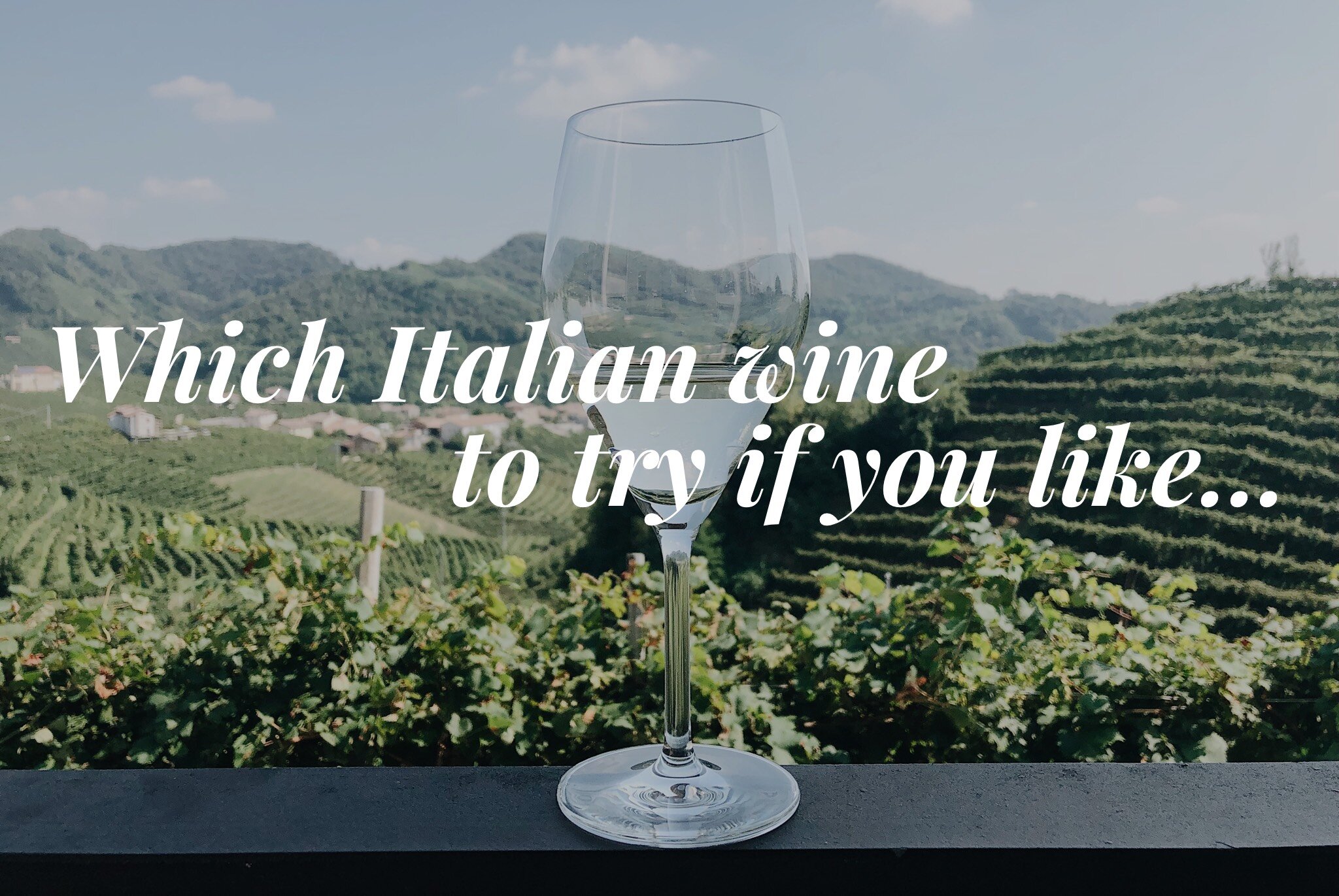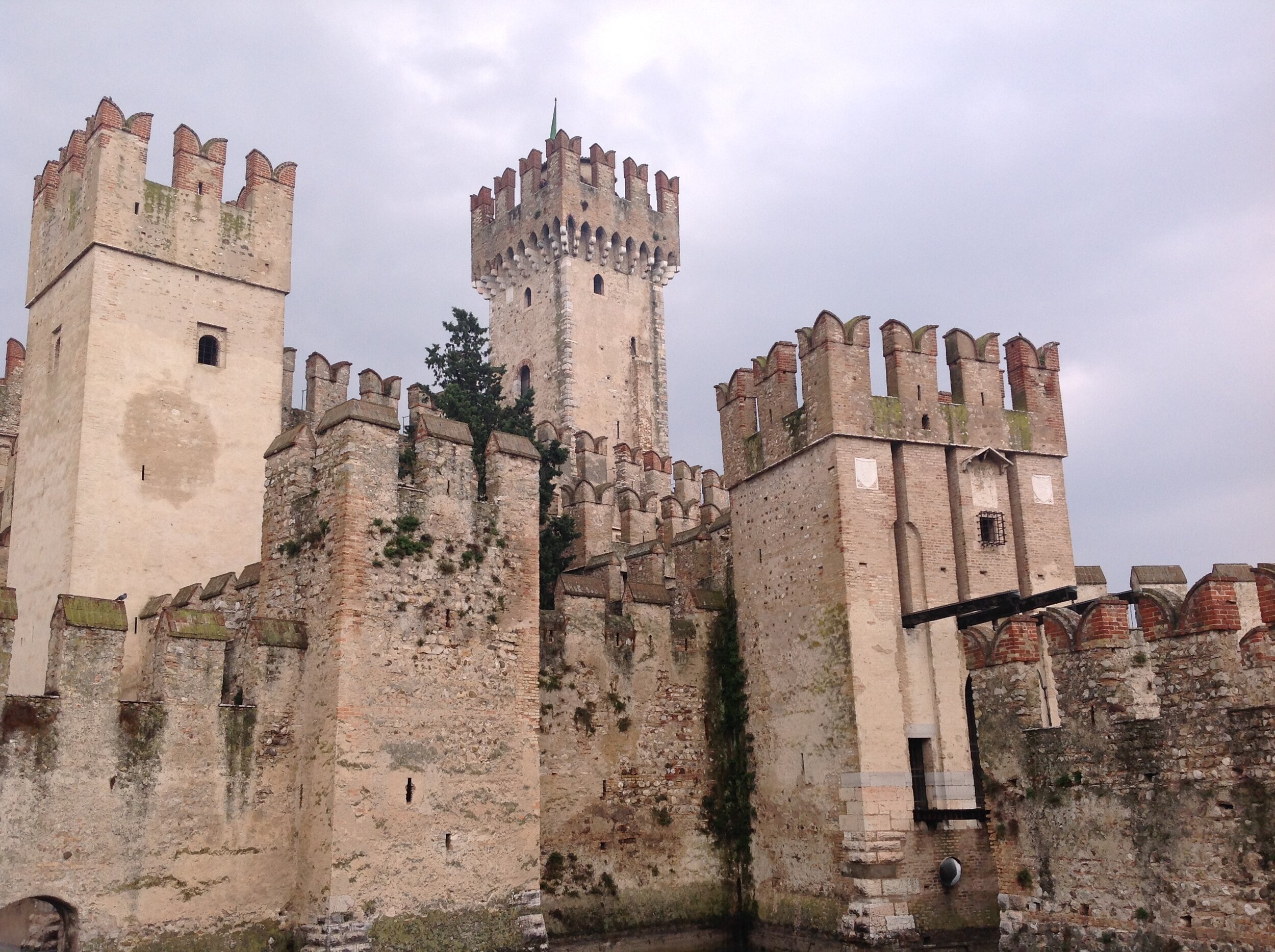Part One / Two
This article will help you find incredible Italian wines that are similar to Cabernet Sauvignon, Pinot Noir, Chardonnay and Sauvignon Blanc.
When I moved to Italy in 2010 and started exploring Italian wine (i.e. drinking lots of it thanks to the Italian aperitivo tradition), I felt like Dorothy in the Wizard of Oz when she steps into the technicolor world of Munchkinland. Where before I was familiar with a limited number of grape varieties I could count on my two hands, Italy opened up a seemingly endless expanse of native grape varieties that expressed themselves so uniquely on my pleased palate. Needless to say, I was smitten.
Fast forward a few years, and I had become a sommelier through the Italian Association of Sommeliers. While you certainly don’t have to become a sommelier to enjoy or understand Italian wine, I hope my expertise will help direct you to Italian wines you will love. I’ve decided to pick a few of the most famous grape varieties such as Cabernet Sauvignon, Pinot Noir, Chardonnay, etc. and “translate” them into Italian.
Please note: Italy has over 350 officially-recognized grape varieties (with plenty of others not registered and more being discovered each year). To offer you some perspective, France has about 60 native grape varieties. This is to say don’t worry if I am suggesting Italian wines you have never heard of before. That is the point! Don’t worry if you can’t pronounce them. I will help with that too! Embrace being introduced to something special — a new crayon to add to your box of colors. Because would you rather be in Kansas or Oz? Exactly. (No offense, Kansas.)
Cheers to being adventurous!
Which Italian wine is similar to Cabernet Sauvignon?
Full bodied, dark berry flavors, big tannins and complex
You know why you love Cabernet Sauvignon. It’s not shy, offering rich flavors and textures, and will certainly warm you up on a cold winter’s evening. From the north to the south, Italy offers big reds that serve the same purpose as a Cab—and probably will give you more bang for your buck too. Below are my picks.
Aglianico del Vulture
(Pronounced: ah - lyi - AH - nee - co dell VOOL - tuur - ā)
This ancient and naturally tannic grape can compete with any steak you put before it, though I prefer lamb chops myself. The nice balance of fruit and earth (with a dash of pepper) will also appeal to most Cabernet lovers. Seek out Aglianico del Vulture from the volcanic soils of an extinct volcano in Basilicata.
Top Aglianico producers to try: Elena Fucci, Carbone, Grifalco, Mastrodomenico
Lagrein
(Pronounced: lah - GRINE)
This variety native to alpine region of Alto Adige in Italy’s north produces medium to full-bodied, dark (one of the darkest in Italy!), spicy wines. Once a wine reserved for the nobility and the church, a popular uprising in 1526 changed that for good.
Top Lagrein producers to try: Cantina Convento Muri-Gries, Cantina di Bolzano, Alois Lageder, Cantina Terlano, and Joseph Mayr.
Sagrantino
(Pronounced: sah - grahn - TEEN - oh)
Hailing from the centrally-located Italian region of Umbria, Sagrantino creates intense, high-tannic wines with dark berry flavors, dark chocolate, spice and tobacco. Look out for Montefalco Sagrantino DOCG wines in particular.
Top Sagrantino producers to try: Paolo Bea, Adanti, Colleallodole, Arnaldo Caprai, Romanelli and Antonelli San Marco.
Nero d’Avola
(Pronounced: nair - oh - DAV - oh - la)
Grown in quite a few Italian regions (mostly under the name Calabrese), but originating in Sicily—and Sicily’s dominant red grape variety—Nero d’Avola offers wines that are complex with ripe cherry, plum and herbal flavors. Keep an eye out for Cerasuolo di Vittoria DOCG which is a blend of Nero d’Avola and up to 40% Frappato (a lighter, fruitier native grape variety).
Top producers of Nero d’Avola to try: Gulfi (specifically Nerojbelo), Donnafugata, Tasca d’Almerita (European Winery of the year for 2019), Valle dell’Acate and Cos.
Which Italian wine is similar to Pinot Noir?
Light to Medium-bodied, red berry flavors, some earthiness, good levels of acidity
The elegance of Italy’s lighter reds were one of the reasons I was won over by Italian wine. Pinot Lovers, please note that I could have added quite a few more wines below, but these will get you off to a good start. Cin-cin!
Bardolino
(Pronounced: bar - doh - LEEN - oh )
Probably the lightest and the most fruity in this selection, Bardolino is made from at least 85% of Corvina, a grape grown to the east of Lake Garda in Italy’s Veneto region. Of these wines, Bardolino is a light-colored, light to medium-bodied wine with red cherry and slightly herbal flavors. And, like Pinot Noir, it makes a delicious rosé called Bardolino Chiaretto (Chiaretto literally means “little clear one”). I highly recommend both.
Top Bardolino producers to try: Le Fraghe, Le Morette and Guerrieri Rizzardi.
Etna Rosso
(Pronounced: ET - nah ROCE - oh)
This is one of my favorite wines in all of Italy. It is what made me want to offer a Sicily Wine + Culture Tour (well, that and the amazing and abundant food on the island!) This red blend is made primarily from Nerello Mascalese, a grape grown on Mount Etna, Europe’s largest active volcano. The volcanic soils add a nice touch of earthiness and minerality to the light/medium-bodied, pale wines that bring forth flavors of sour cherry, aromatic herbs and tobacco.
Top Etna Rosso producers to try: I Vigneri, Graci, Fattorie Romeo del Castello, Passopissciaro, Pietradolce, Calabretta and Benanti
Chiara Vigo of Fattorie Romeo del Castello with Mt. Etna in the background
Langhe Nebbiolo
(Pronounced: neb - ee - OH - lo)
Nebbiolo is the grape that gives us Barolo and Barbaresco—arguably two of the top five red wines coming out of Italy, and hands down in Piedmont located in Italy’s northwest. Langhe Nebbiolo is made in a more young and fresh style, though it still has that tannic structure! If you like a little more tannin in your pinot noir, then this is the wine for you. The tart red fruit and earthiness might have you thinking of Burgundy.
Top Langhe producers to try: Produttori del Babaresco, Borgogno, Chiara Boschis, Cascina delle Rose, Cavallotto, Podere Ruggeri Corsini, Paolo Scavino, Elio Altare and Elio Grasso
Grignolino
(Pronounced: green - nyo - LEEN - oh)
It is said that this Piemontese wine was enjoyed by Count Cavour when Barolo was just a twinkle in his eye. Like Nebbiolo, it is difficult to grow, but gives beautiful results with a bit of finesse. A classic Grignolino looks more like a rosé than a red wine, though tinged slightly orange, and greets you with bountiful, perfumed notes of flowers, red berries, earth and spice. The good levels of acidity and tannins elevate it to a wine that can withstand pretty rich dishes. Two appellations to look for on the label: Grignolio d’Asti or Grignolino del Monferrato.
Top Grignolino producers to try: Braida, Tenuta Gareto, Francesco Rinaldi
Which Italian wine is similar to Chardonnay?
Medium-full bodied, good acidity, apple and lemon flavors
There are many different styles of Chardonnay out there: the fresh, lean, un-oaked Chardonnays to the full, creamy, oaked ones—and everything in between! The Italian white wines listed below, likewise, come in a full rainbow of styles. Try out a few!
Fiano d’Avellino
(Pronounced: fee - AH - no dav - ā - LEE - no)
Some experts say Fiano is the best Italian native white grape variety—also one of the oldest in Italy. It can produce some full-bodied age-worthy wines, as well as more simple, fresh versions. While grown in much of Southern Italy, Fiano d’Avellino DOCG wines from Campania are considered the best. There’s a nuttiness that comes through in the wine, as well as flavors of green apple and sometimes more exotic fruit, accompanied by a light honied note.
Top producers of Fiano d’Avellino to try: Ciro Picariello, Tenuta Sarno 1860, Rocca del Principe, Villa Raiano, Mastroberardino, Colli di Lapio Romana Clelio
Falanghina
(Pronounced: fahl - ahn - GEEN - ah )
Another great white wine from Campania! You can look out for two regions in particular: Campi Flegrei and Taburno. Falanghina makes a range of wines, just like Fiano. In the richer versions, it is known for a creaminess similar to buttery Chardonnays. Its tends to offer flavors of green apple, apricot and delicate white flowers.
Top producers of Falanghine to try: Agnanum, Mastroberardino, Cantina del Taburno, Mustilli, Contrada Salandra, and Vesevo.
Soave
(Pronounced: so - WAH - vay)
In the middle of the Veneto region, lies the ancient fortress city of Soave. Surrounding this beautiful town are vineyards of the garganega grape, the main component to Soave. The mineral-rish soils are expressed in your wine glass, as are aromas and flavors of lemon, apple, pear, and a slightly bitter almond finish. These wines can age well, and depending on the aging they have seen can be really structured and rich.
Top producers of Soave to try: Inama, Pieropean, Prà, Suavia (Hint: try and seek out Soave’s regional neighbor, Gambellara, for other stellar wines made from the garganega grape.)
Which Italian wine is similar to Sauvignon Blanc?
Light-bodied, high acidity, citrus and exotic fruit flavors
Verdicchio / Lugana / Trebbiano di Soave
(Pronounced: ver - DICK - ee - oh / loo - GAHN - ah / treb - ee - AHN - oh dee so - AH - vey)
This grape goes by three different names (at least), giving us three different wines from three different regions—and all would make any Sauvignon Blanc drinker happy with its crisp and steely nature.
In the Marche, on the central Adriatic coast, the grape is called Verdicchio and is responsible for two DOCG wines in the region: Verdicchio dei Castelli di Jesi and Verdicchio di Matelica. Both are super fresh and give a nice citrus-forward flavor with some floral nuances and tingly minerality.
Lombardy and the Veneto share a wine appellation producing this grape called Lugana, while the grape here goes by the moniker Turbiana or Trebbiano di Lugana. Before your head starts spinning, just know these vineyards are found at the base of Lake Garda (neighbors to Bardolino) and make excellent mineral-driven wines with the characteristic high acidity.
The Veneto additionally makes wines with the same grape, this time under the name of Trebbiano di Soave. It is one of the permissible grape varieties that goes into Soave, and is rarely made as a varietal wine.
Top producers of Verdicchio to try: Bucci, Garofoli
Top producers of Lugana to try: Ottella, Le Morette, Ca’ Lojera
Producer of Trebbiano di Soave to try: Suavia (Massi Fitti)
Sirmione Fortress, Lake Garda
Gavi
(Pronounced: GAV - ee)
Gavi got a bad wrap in the 80s (like Soave), but stands as another successful comeback story. Made from the Cortese grape grown in Piedmont, Gavi is a very dry wine, usually with a nice minerality and delicate floral and/ or herbal aromas. Here again, you have two appellations to look out for on the wine label: Gavi di Gavi or Gavi di Tassarolo.
Producers of Gavi to try: Chiarlo, Castellari Bergaglio, Valditerra, La Mesma, La Raia, La Chiara
Blanc de Morgex et de la Salle
(Pronounced more in the Italian than the French, but both will do: blahnk day mor - JAY day - lah - SAL)
These wines are as fresh as the first snowfalls in Valle d’Aosta, the tiny, mountainous region in Italy’s northwest (first snowfalls happen in October, by the way). Prié Blanc is the grape behind this austere alpine wine. You can expect high acidity with lemony, herbal and floral flavors. Enjoy in the dead of summer or winter!
Producers of Prié Blanc/ Blanc de Morgex et de La Salle to try: Piero Brunet, Cave de Morgex et La Salle, Ermes Pavese, and Albert Vevey.
Blanc de Morgex et de la Salle vineyards in Valle d’Aosta















